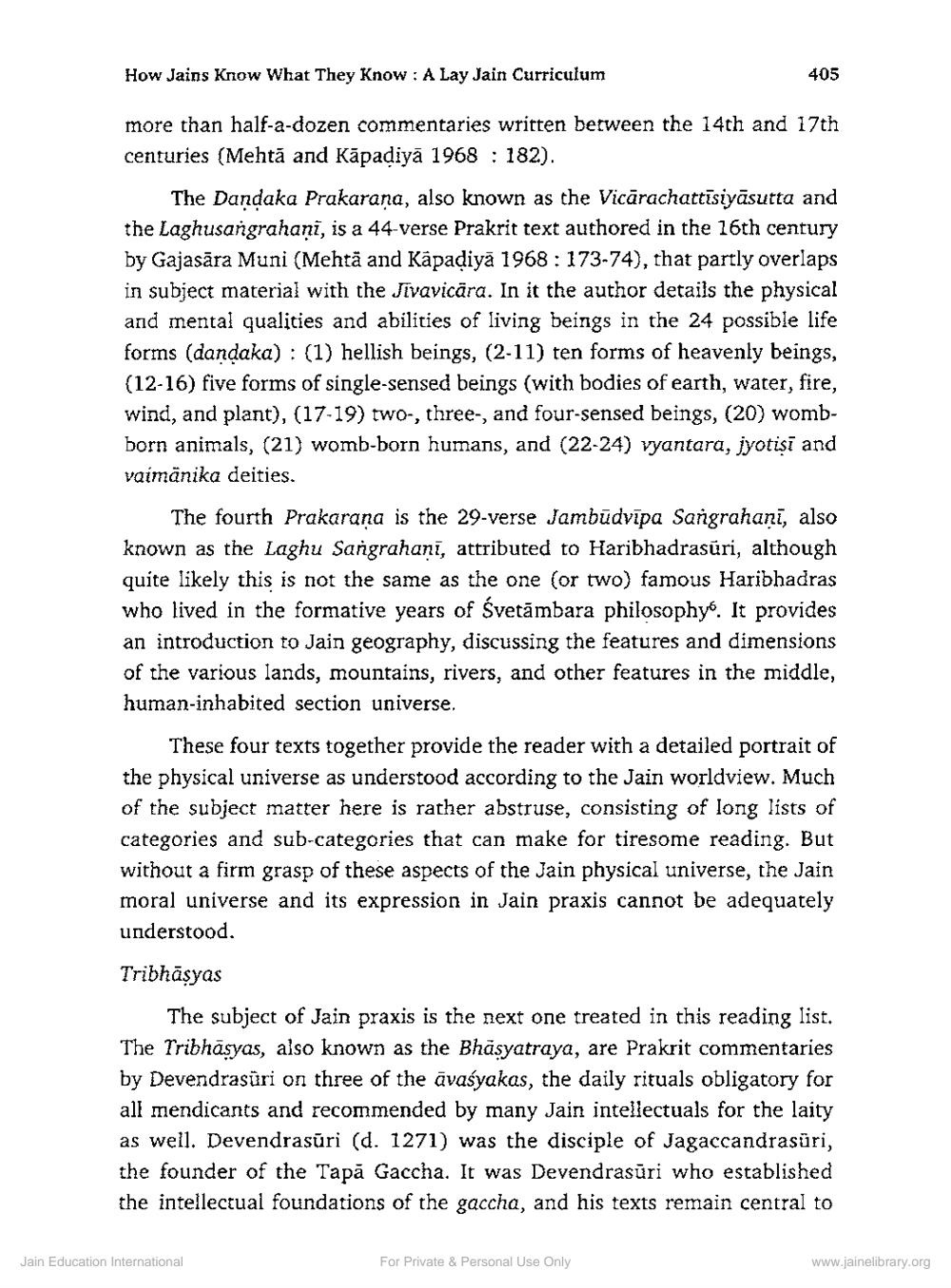Book Title: How Jains Know What They Know A Lay Jain Curriculum Author(s): John E Cort Publisher: Z_Nirgranth_Aetihasik_Lekh_Samucchay_Part_1_002105.pdf and Nirgranth_Aetihasik_Lekh_Samucchay_Part_2 View full book textPage 7
________________ How Jains Know What They Know : A Lay Jain Curriculum 405 TL more than half-a-dozen commentaries written between the 14th and 17th centuries (Mehta and Kāpadiyā 1968 : 182). The Dandaka Prakarana, also known as the Vicārachattīsiyāsutta and the Laghusangrahani, is a 44-verse Prakrit text authored in the 16th century by Gajasāra Muni (Mehta and Kāpadiyā 1968:173-74), that partly overlaps in subject material with the Jivavicära. In it the author details the physical and mental qualities and abilities of living beings in the 24 possible life forms (dandaka): (1) hellish beings, (2-11) ten forms of heavenly beings, (12-16) five forms of single-sensed beings (with bodies of earth, water, fire, wind, and plant), (17-19) two, three-, and four-sensed beings, (20) wombborn animals, (21) womb-born humans, and (22-24) vyantara, jyotisi and vaimänika deities. The fourth Prakarana is the 29-verse Jambudvīpa Sangrahani, also known as the Laghu Sangrahani, attributed to Haribhadrasuri, although quite likely this is not the same as the one (or two) famous Haribhadras who lived in the formative years of Svetāmbara philosophy. It provides an introduction to Jain geography, discussing the features and dimensions of the various lands, mountains, rivers, and other features in the middle, human-inhabited section universe. These four texts together provide the reader with a detailed portrait of the physical universe as understood according to the Jain worldview. Much of the subject matter here is rather abstruse, consisting of long lists of categories and sub-categories that can make for tiresome reading. But without a firm grasp of these aspects of the Jain physical universe, the Jain moral universe and its expression in Jain praxis cannot be adequately understood. Tribhāsyas The subject of Jain praxis is the next one treated in this reading list. The Tribhāsyas, also known as the Bhasyatraya, are Prakrit commentaries by Devendrasūri on three of the avasyakas, the daily rituals obligatory for all mendicants and recommended by many Jain intellectuals for the laity as well. Devendrasūri (d. 1271) was the disciple of Jagaccandrasuri, the founder of the Tapā Gaccha. It was Devendrasūri who established the intellectual foundations of the gaccha, and his texts remain central to Jain Education International For Private & Personal Use Only www.jainelibrary.orgPage Navigation
1 ... 5 6 7 8 9 10 11 12 13 14 15
